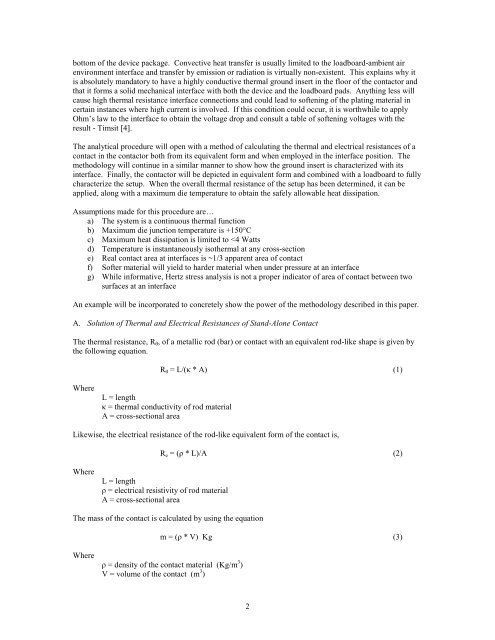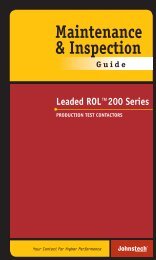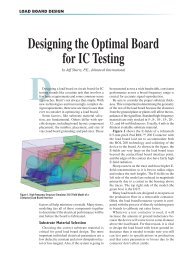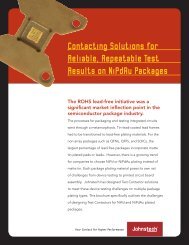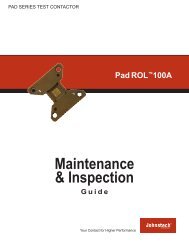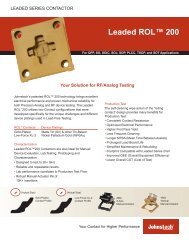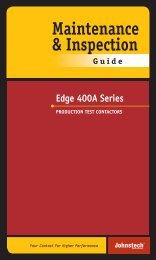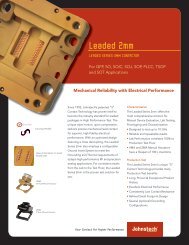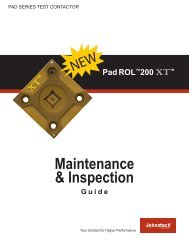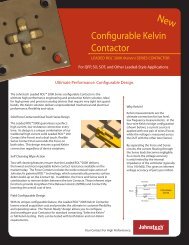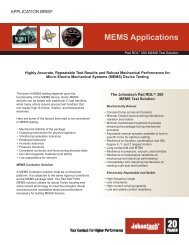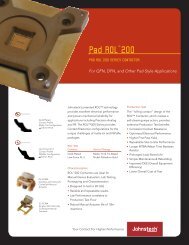Thermal Modeling and Analysis of Device-Contactor ... - Johnstech
Thermal Modeling and Analysis of Device-Contactor ... - Johnstech
Thermal Modeling and Analysis of Device-Contactor ... - Johnstech
Create successful ePaper yourself
Turn your PDF publications into a flip-book with our unique Google optimized e-Paper software.
ottom <strong>of</strong> the device package. Convective heat transfer is usually limited to the loadboard-ambient airenvironment interface <strong>and</strong> transfer by emission or radiation is virtually non-existent. This explains why itis absolutely m<strong>and</strong>atory to have a highly conductive thermal ground insert in the floor <strong>of</strong> the contactor <strong>and</strong>that it forms a solid mechanical interface with both the device <strong>and</strong> the loadboard pads. Anything less willcause high thermal resistance interface connections <strong>and</strong> could lead to s<strong>of</strong>tening <strong>of</strong> the plating material incertain instances where high current is involved. If this condition could occur, it is worthwhile to applyOhm’s law to the interface to obtain the voltage drop <strong>and</strong> consult a table <strong>of</strong> s<strong>of</strong>tening voltages with theresult - Timsit [4].The analytical procedure will open with a method <strong>of</strong> calculating the thermal <strong>and</strong> electrical resistances <strong>of</strong> acontact in the contactor both from its equivalent form <strong>and</strong> when employed in the interface position. Themethodology will continue in a similar manner to show how the ground insert is characterized with itsinterface. Finally, the contactor will be depicted in equivalent form <strong>and</strong> combined with a loadboard to fullycharacterize the setup. When the overall thermal resistance <strong>of</strong> the setup has been determined, it can beapplied, along with a maximum die temperature to obtain the safely allowable heat dissipation.Assumptions made for this procedure are…a) The system is a continuous thermal functionb) Maximum die junction temperature is +150°Cc) Maximum heat dissipation is limited to


